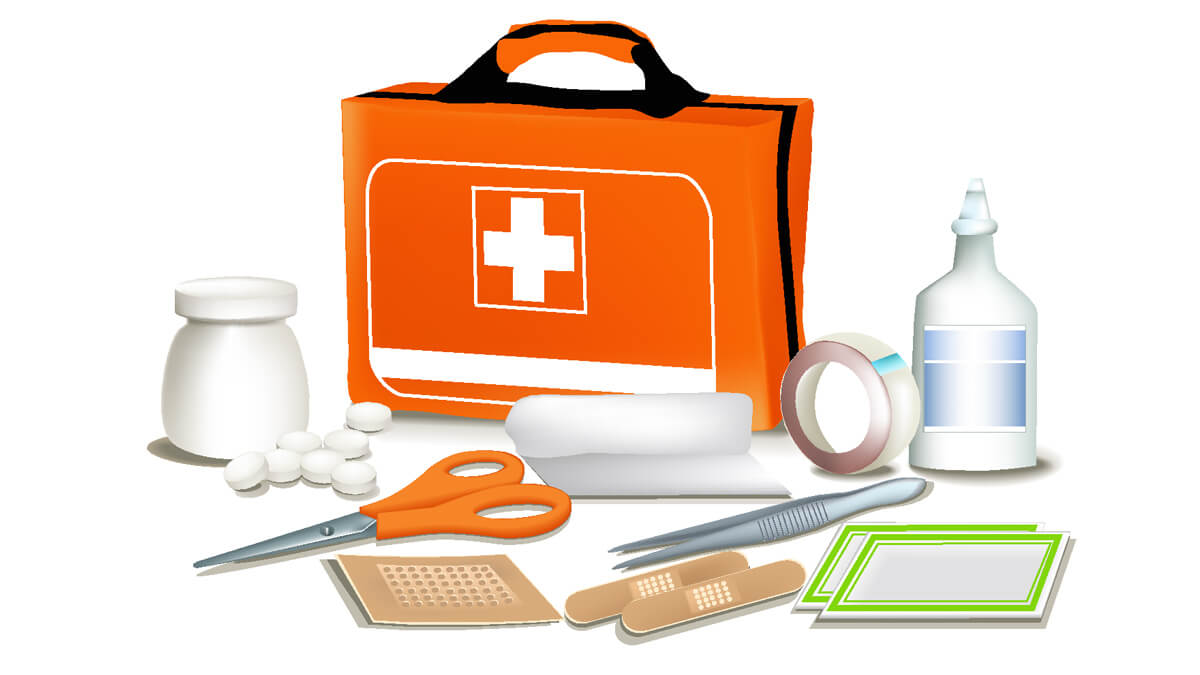First aid is emergency care or treatment given to an ill or injured person before regular medical aid can be obtained. It is typically is provided at the location the injury occurs and often consists of a one-time, short-term treatment and requires little technology or training to administer.
Sources: BSA Handbook, Pardee UNC Health Care, MayoClinic.org, Health.Harvard.edu, Dovemed.com, Alocane.com and StanfordHealthcare.org.
Cuts and Scrapes
- Small cuts and scrapes of the skin can allow bacteria to enter the body and cause infection.
- Wash small cuts and scrapes with soap and water.
- Ask the injured people if they have any allergies. If the answer is no, apply triple antibiotic ointment and cover with a dry, sterile dressing to help prevent infection and protect the wound.
- Clean and bandage wounds each day or as often as needed.
Signs of Infection
- Redness, warmth, tenderness, swelling and green or yellow discharge or fluid.
- The victim might also experience body aches, chills, fever or swollen lymph nodes in the neck, armpit or groin areas.
- Consult a doctor if the signs of infection worsen or spread beyond the affected area or red streaking is visible around the affected area.
Insect Stings and Bites
The bites or stings of ticks, chiggers, spiders and insects can be painful and sometimes deadly. Some bites or stings might cause infection, so it is important to protect yourself with clothing and repellents. If you are outdoors, be sure to inspect yourself daily, especially the hairy parts of your body; you may have unwelcome travelers, such as ticks.
Signs and Symptoms of an Insect Sting or Bite
A mild reaction:
- Red bumps;
- Itchiness;
- Mild swelling.
A severe reaction:
- Difficulty breathing, wheezing, chest tightness;
- Fainting or dizziness;
- Difficulty speaking or swallowing;
- Face or mouth swelling.
*If the injured has an injectable epinephrine (EpiPen), give immediately.
**Call 911 if the injured person is unconscious. If the person is conscious, give him or her diphenhydramine – Benadryl.
Tick Bites
- To remove a tick, wear latex-free gloves and use tweezers to grasp the tick close to the skin.
- Grab the tick as close to its head and mouth area as possible.
- Pull gently until the tick comes loose.
- Don’t squeeze, twist or jerk the tick; it can cause the tick’s mouthparts to break off in the skin.
- Thoroughly wash the wound with soap and water and apply antiseptic.
- Be sure to sterilize the tweezers after use.
- Wash your hands thoroughly after dealing with a tick; they sometimes spread Lyme disease, Rocky Mountain spotted fever and other serious illnesses.
Fall Injuries
Anyone can fall, but injuries to adults are common problems, especially for those over 65 years of age. It has reported that about 20% of adult falls result in a bone fracture or a severe head injury.
Signs and Symptoms:
- Lacerations;
- The injured site is swollen;
- Bruises and contusions;
- Injury to the arms, legs and head;
- Fractures.
Treatment:
- Minor:
- Clean visible wounds with water.
- Apply a wrapped ice pack to the injury to reduce swelling and pain.
- Try to comfort the injured person and assess the reason for the fall.
- With older adults, it is important to monitor them or the next day or two to ensure there are no other symptoms.
- Major:
- Call 911 immediately if there is heavy bleeding from the injury site or bleeding from the nose, ears or mouth or if there might be a head, neck, back or hip injury, difficulty breathing, the person is unable to move or the person is unconscious.
Factors to Consider:
Age and gender of the individual; Height of the fall; Weight of the individual; Overall health status.
Poison Ivy/Oak/Sumac
Oil from poison ivy, poison oak and poison sumac plants can cause an allergic reaction when it comes in contact with skin. Most mild rashes cause discomfort from itching, burning or blistering and can be treated at home. Severe, widespread rashes require medical treatment.
Signs and Symptoms:
- A red, itchy rash that appears within four hours to four days after contact with plant oil;
- Oozing blisters that have clear fluid;
- Bumps and blisters that can take on different appearances and sizes and many times look like streaks;
- A crusty look to blisters as the rash heals.
Treatment:
- Gently wash skin with soap and water as soon as contact is made, making sure to scrub under fingernails.
- Remove any clothing that has come in contact with the oil of the plant or rash and wash all clothing that was worn recently.
- Keep fingernails trimmed short to prevent breaking the skin when scratching.
- Apply cool compresses on the skin, as needed.
- For itching, add oatmeal to bath water, use calamine lotion – avoiding face or genitals – and, if needed, diphenhydramine – Benadryl.
By Joe and Stacy Domingo
